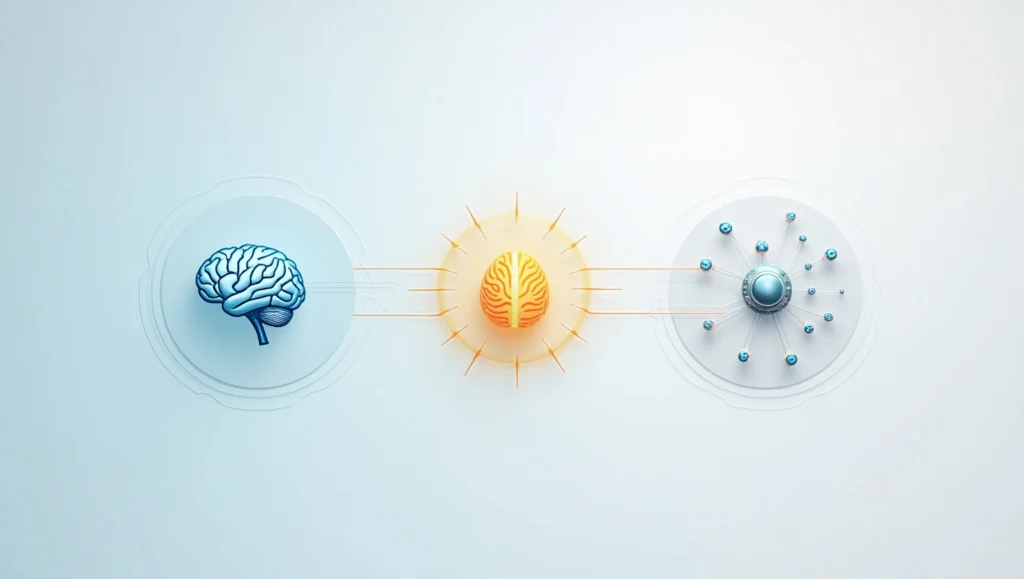- June 20, 2025
- by Anoop Kumar
Benchmarking Model Context Protocol (MCP) : Performance Gains in Multi-Agent AI Systems
In the rapidly advancing domain of Enterprise Artificial Intelligence, performance, scalability, and interoperability have emerged as strategic imperatives. As AI systems evolve from monolithic models to collaborative, agent-based ecosystems, the Model Context Protocol (MCP) has established itself as a cornerstone technology. Fortune 500 enterprises and digital-first consultancies are now investing in MCP-based architectures to unlock next-level performance gains in multi-agent AI systems.
Understanding the Model Context Protocol (MCP)

At its core, MCP is a standardized protocol that enables context sharing, state persistence, memory synchronization, and secure tool access across distributed AI agents and models. It allows AI systems to:
- Retain long-term context across sessions and tools
- Interact with structured memory and APIs in real time
- Delegate tasks dynamically across agents and services
- Enforce fine-grained permissions and auditability
“MCP is the HTTP of the next-gen AI era—it provides a universal language for context exchange between models, tools, and memory systems,” says Global Head of Cognitive Platforms at Accenture.
Why Benchmarking MCP Matters in 2025
Organizations adopting multi-agent AI platforms—such as those used in enterprise search, autonomous research, or generative workflows—must evaluate not just the intelligence of individual agents, but the coherence, efficiency, and collaboration between them.
Benchmarking MCP allows enterprises to:
- Quantify latency improvements from context persistence
- Measure task completion efficiency across agent clusters
- Evaluate scalability under concurrent agent loads
- Benchmark context-switch handling in agent-task chains
According to a 2025 study by MIT Tech Review, multi-agent systems using MCP showed a 45% faster task resolution time on average compared to siloed LLM deployments.
Key Performance Gains Unlocked by MCP
1. Reduced Redundancy through Shared Memory
MCP enables agents to access a shared memory layer, eliminating repetitive data retrieval, API calls, or re-processing. In Fortune 100 financial firms, this has reduced API overhead by up to 62%.
2. Task Handoff Efficiency
Using structured context tokens, agents can hand off work to other agents or tools with zero loss in instruction fidelity. This is crucial for domains like legal AI, where misinterpretation can carry financial or compliance risks.
3. Parallelized Problem Solving
With MCP’s context synchronization, agent swarms can work in parallel on decomposed sub-tasks, reducing total execution time. Benchmarks in logistics AI showed multi-agent orchestration reduced planning time by 38%.
4. Security and Observability at Scale
MCP enables context-aware access control and provides full observability for debugging and compliance—a must for regulated industries like healthcare and finance.
“Without MCP, coordination between AI agents is inefficient and opaque. With it, we get a scalable, governable system with real business impact,” states Director of AI Architecture at Deloitte Digital.
Benchmarking Framework: A Reference Architecture

To assist enterprises in evaluating MCP’s performance, leading AI labs recommend a standard benchmarking framework involving:
- Task complexity index (simple, compound, recursive)
- Context switch volume (measured in tokens and API hops)
- Agent chain length (number of agents per task)
- Execution time delta with vs. without MCP
Example Benchmark (2025):
Use Case | Task Resolution Time w/o MCP | Time with MCP | Performance Gain |
Insurance Claims Review | 78s | 41s | +47.4% |
Legal Contract Drafting | 192s | 99s | +48.4% |
Pharma Data Research | 301s | 163s | +45.8% |
The Role of RPA and Enterprise Tech Firms
As RPA and workflow orchestration platforms embrace AI-native design, MCP becomes foundational. Indian leaders like gNxt Systems are among early adopters:
“MCP has become central to our next-gen automation fabric. It enables not just intelligent task execution, but also dynamic collaboration between digital workers and AI agents,” notes Anoop Jain, CEO, gNxt Systems.
In partnership with clients across APAC and North America, gNxt has benchmarked a 40-60% improvement in process turnaround times after MCP integration.
What This Means for CIOs and CTOs
Adopting MCP is no longer a technical luxury—it’s a strategic enabler. Enterprise tech leaders must:
- Prioritize interoperability in AI/ML procurement
- Establish benchmarking protocols for AI agent performance
- Invest in MCP-complaint tools, agents, and memory systems
“MCP is how we operationalize AGI principles at enterprise scale,” says VP of AI Engineering, SAP.
Conclusion: MCP as the Backbone of Intelligent Collaboration
As AI matures into a multi-agent, tool-augmented ecosystem, MCP provides the connective tissue. Benchmarking its impact isn’t just technical hygiene—it’s a path to real-world performance, cost savings, and innovation.
In the next 12–18 months, organizations that master MCP integration and benchmarking will lead in AI-driven transformation. Those who don’t risk being stuck in a fragmented, inefficient AI landscape.
Read this blog by gNxt Systems. It might interest you:
What Is Model Context Protocol (MCP) and Why It Matters for AI Developers in 2025
About Author

CEO at gNxt Systems
With 25+ years of expertise, Mr. Anoop Jain delivers complex projects, driving innovation through IT strategies and inspiring teams to achieve milestones in a competitive, technology-driven landscape.

